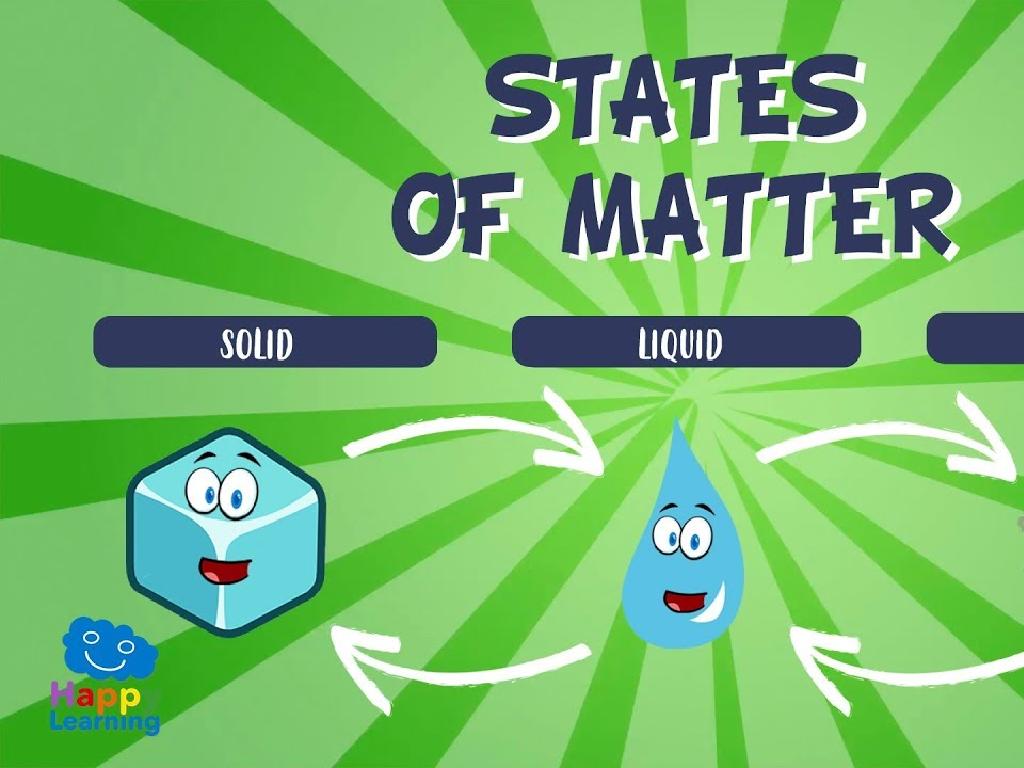Graph A Horizontal Or Vertical Line
Subject: Math
Grade: Eighth grade
Topic: Linear Equations
Please LOG IN to download the presentation. Access is available to registered users only.
View More Content
Graphing Horizontal & Vertical Lines
– Basics of linear equations
– Graphing lines on the coordinate plane
– Plot points and draw a straight line through them
– Horizontal vs. vertical lines
– Horizontal lines: y = a constant, Vertical lines: x = a constant
– Applications of linear graphs
– Used in construction, navigation, and design
|
Begin with a review of linear equations and their representations. Emphasize that today’s lesson will focus on the special case of horizontal and vertical lines on the coordinate plane. Explain that horizontal lines have equations of the form y = b where b is the y-intercept, and vertical lines have equations of the form x = a where a is the x-intercept. Provide examples of each on the board. Discuss how these concepts apply to real-world scenarios such as architecture, where horizontal lines may represent floors in a building, and vertical lines could represent walls. Encourage students to think of other examples where horizontal and vertical lines are used in everyday life.
Understanding Linear Equations
– Define a linear equation
– An equation that makes a straight line when graphed
– General form: y = mx + b
– ‘m’ represents slope, ‘b’ is y-intercept
– Characteristics of linear equations
– Constant slope, straight graph, no curves
|
This slide introduces the concept of linear equations, which are foundational in algebra and represent straight lines on a graph. Start by defining a linear equation as one that forms a straight line when graphed. Explain the general form y = mx + b, where ‘m’ is the slope of the line and ‘b’ is the y-intercept, the point where the line crosses the y-axis. Emphasize the characteristics of linear equations: they have a constant slope, which means the steepness of the line does not change, and they do not curve. This will set the stage for understanding how to graph horizontal and vertical lines, which are special cases of linear equations with slopes of 0 and undefined, respectively.
Graphing Horizontal Lines
– Equation of a horizontal line
– A horizontal line has the form y = b, where b is a constant.
– ‘b’ represents the y-intercept
– The line crosses the y-axis at point (0, b).
– Horizontal lines in graphs
– All points on the line have the same y-coordinate, b.
– Practice plotting horizontal lines
|
This slide introduces the concept of horizontal lines in the context of linear equations. Emphasize that a horizontal line is described by the equation y = b, where ‘b’ is the y-intercept, the point where the line crosses the y-axis. Provide examples on a graph to illustrate how these lines are always flat and parallel to the x-axis. Encourage students to recognize that the y-coordinate for any point on a horizontal line remains constant, which is why the equation does not include x. As an activity, have students practice plotting horizontal lines by choosing different values for ‘b’ and drawing the lines on a graph. This will help solidify their understanding of the concept.
Graphing Vertical Lines
– Equation of a vertical line
– A vertical line is described by x = a, where ‘a’ is a constant.
– ‘a’ represents the x-intercept
– The line crosses the x-axis at point ‘a’.
– Plotting vertical lines on a graph
– Use graph paper to draw lines like x = 2, showing it’s vertical.
|
This slide introduces the concept of graphing vertical lines in the coordinate plane. Emphasize that the equation x = a means that no matter what value y takes, x will always be ‘a’. This is why the line is vertical; it goes straight up and down. The point where the line crosses the x-axis, known as the x-intercept, is the value of ‘a’. Provide examples on the board, such as x = 3, and ask students to plot this on graph paper. Encourage them to notice that all points on this line have an x-coordinate of 3. This will help solidify their understanding of vertical lines in a graph.
Graphing Horizontal Lines
– Steps to plot a horizontal line
– Start with a point, move along x-axis, keep y constant
– Activity: Graph y = 3
– Use graph paper to plot y = 3, marking points where y remains at 3
– Discuss line properties
– Horizontal lines have a slope of 0, no rise over run
|
This slide introduces students to the concept of graphing horizontal lines. Begin by explaining the step-by-step process: choose any point on the y-axis at the desired y-value, then move horizontally in both directions, ensuring that the y-value remains constant. For the activity, provide graph paper and ask students to plot the line y = 3, marking points where the y-coordinate is 3 and the x-coordinate varies. After plotting, discuss the properties of the line, emphasizing that horizontal lines have a slope of 0 because there is no vertical change as the x-values change. This activity will help students recognize the characteristics of horizontal lines and understand how to graph them accurately.
Graphing Vertical Lines
– Steps to plot a vertical line
– Choose any y-value; x-coordinate stays at -2
– Activity: Graph x = -2
– Use graph paper to plot the line x = -2
– Discuss line properties
– Vertical lines have undefined slope
|
This slide introduces students to the concept of graphing vertical lines within the context of linear equations. Begin by explaining the process of plotting a vertical line, emphasizing that all points on this line have the same x-coordinate. For the activity, provide students with graph paper and ask them to plot the line x = -2, marking points where x remains -2 and y varies. After plotting, discuss the properties of the graphed line, such as the fact that vertical lines have an undefined slope because the change in y over the change in x is not constant. This activity will help students visualize and understand the unique characteristics of vertical lines on a Cartesian plane.
Class Activity: Graphing Horizontal & Vertical Lines
– Pair up for graphing equations
– Graph a horizontal & a vertical line
– Use the form y = b for horizontal, x = a for vertical
– Observe intersection points
– Do the lines cross? Mark the point (x, y)
– Discuss findings with the class
|
This activity is designed to help students understand the concept of graphing linear equations, specifically horizontal and vertical lines. Students will work in pairs to encourage collaboration. Each pair will receive a set of equations and graph one horizontal line (of the form y = b) and one vertical line (of the form x = a) on the same coordinate plane. They will then observe whether the lines intersect, marking the intersection point if it exists. After graphing, lead a class discussion to review the concept of intersections and the significance of the points where lines cross. Possible variations for different pairs could include using different values for ‘a’ and ‘b’ to see how the lines shift on the graph.
Real-World Application of Horizontal & Vertical Lines
– Examples of horizontal/vertical lines
– Horizon in landscapes, edges of buildings
– Significance in different fields
– Architecture, engineering, art
– Activity: Draw using lines
– Sketch objects with horizontal/vertical lines like books on a shelf, skyscrapers
|
This slide aims to show students the practical application of understanding horizontal and vertical lines in the real world. Start by discussing everyday examples, such as the horizon or the edges of a building, which are horizontal and vertical respectively. Explain how these concepts are crucial in fields like architecture, where vertical lines might represent support beams, or in art, where horizontal lines can create a sense of calm. For the activity, have students draw objects that consist mainly of horizontal and vertical lines, such as a stack of books or city skylines, to reinforce their understanding. This will help them visualize the concept and see the relevance of linear equations in daily life. Provide guidance on how to start the drawing and encourage creativity.
Review and Q&A: Graphing Horizontal & Vertical Lines
– Recap of graphing line principles
– Reviewed how to graph x=a and y=b lines
– Open floor for student questions
– Offer further clarification
– Clarify any part of the lesson, ensuring understanding
– Provide additional examples
– Example: Graph x=3 and y=-2 on the coordinate plane
|
This slide is designed to consolidate the students’ understanding of graphing horizontal and vertical lines. Begin with a brief recap of the key points from today’s lesson, emphasizing the form of equations for horizontal lines (y=b) and vertical lines (x=a). Encourage students to ask questions they may have about the lesson, providing a safe space for inquiry and clarification. Be prepared to address common areas of confusion, such as the difference between horizontal and vertical lines and how to determine which axis they are parallel to. If necessary, walk through additional examples on the board, such as graphing x=3 (a vertical line passing through 3 on the x-axis) and y=-2 (a horizontal line passing through -2 on the y-axis), to reinforce the concept. The goal is to ensure that each student leaves the class with a clear understanding of how to graph horizontal and vertical lines.
Homework: Graphing Lines & Real-World Examples
– Graph 5 horizontal lines
– Graph 5 vertical lines
– Find real-world line examples
– Examples: horizon (horizontal), light post (vertical)
– Study for a linear equations quiz
|
This homework assignment is designed to reinforce students’ understanding of horizontal and vertical lines within the context of linear equations. Students should practice graphing to gain confidence in identifying and drawing these lines. Additionally, by finding real-world examples, students can connect the abstract concept of linear equations to tangible objects they encounter daily. This activity will also prepare them for the upcoming quiz by applying their knowledge in a practical manner. Encourage students to be creative with their examples and to review their notes and textbook to ensure they are well-prepared for the quiz.






